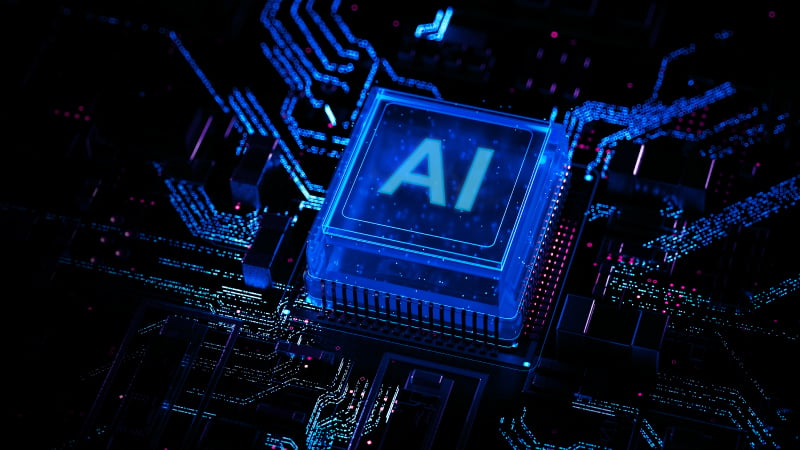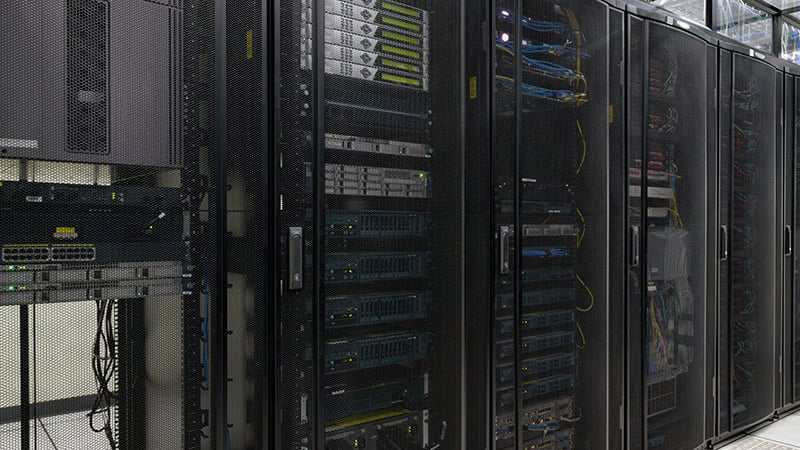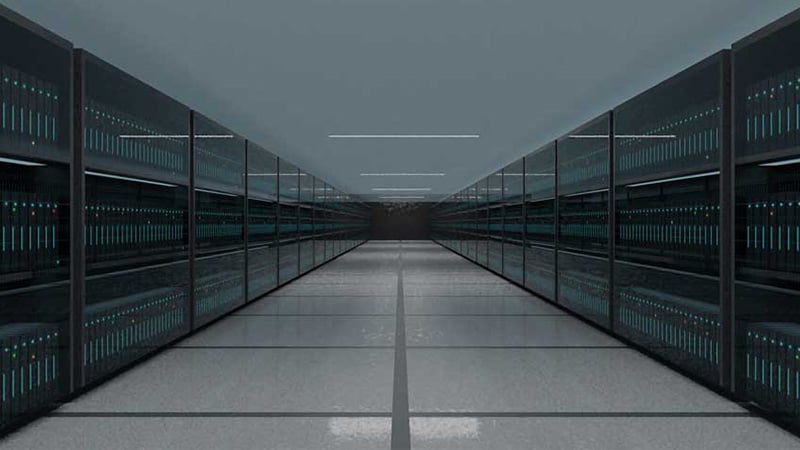Les charges de travail de l'informatique à haute performance (HPC) sont sur une trajectoire ascendante et ne semblent pas vouées à ralentir de sitôt. Bloomberg estime que l’IA générative devrait représenter un chiffre d’affaires de 1,3 billion de dollars d’ici 2032, tandis que les améliorations des GPU ont multiplié par mille les performances informatiques en seulement 10 ans, avec des développements dépassant rapidement les versions précédentes sur des périodes plus courtes.
Face à l'augmentation des charges de travail, les opérateurs de data centers sont également confrontés à des défis liés aux fluctuations de puissance croissantes dues à la hausse de la demande d'énergie. Cela les incite à innover dans l’alimentation de leur data center pour prendre en charge efficacement les charges de travail du HPC.
Une alimentation électrique fiable commence par garantir un réseau d’alimentation fiable et un fonctionnement continu. Parmi les éléments du réseau d’alimentation, les alimentations sans interruption (ASI) sont essentielles à la fiabilité, à la protection contre les pannes de courant, à la distribution transparente de l’électricité aux équipements informatiques et au maintien de l’efficacité opérationnelle.
Comprendre le réseau d’alimentation du data center pour l’IA
Le réseau d’alimentation (voir Figure 1) est une structure de distribution électrique du réseau électrique vers l’équipement IT comprenant des tableaux électriques, des ASI, des bandeaux de prises (PDU) et d’autres composants vitaux. Ces technologies fonctionnent ensemble pour fournir l’électricité aux data centers.
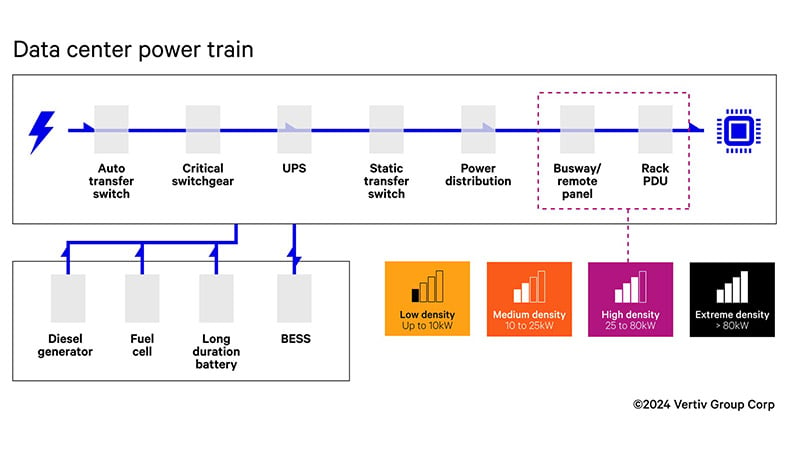
Figure 1. Schéma d’un réseau d’alimentation
Un système intégré favorise une disponibilité optimale, offrant une alimentation électrique et des solutions de secours fiables pour se protéger des pannes et maintenir un fonctionnement continu. Pour comprendre l’efficacité de cette configuration, étudions le flux d’électricité et examinons comment chaque technologie contribue au fonctionnement global :
- Réseau électrique ou source d’énergie renouvelable : Il s'agit de la source d'énergie de l'infrastructure du data center.
- Commutateur de transfert automatique : Bascule en toute transparence vers des sources d’alimentation de secours en cas de panne électrique principale, garantissant un fonctionnement continu. Outre l'ASI, ces sources d'alimentation de secours comprennent :
- Piles à combustible : Elles fonctionnent à l’hydrogène et peuvent servir de sources d’alimentation principale ou redondante.
- Batteries longue durée : Elles offrent une puissance électrique et une fiabilité supérieures aux batteries d’ASI classiques.
- Tableaux électriques critiques : Il s’agit de la première ligne de défense contre les défaillances extérieures, telles que les fluctuations de tension ou les courts-circuits, dirigeant l’alimentation vers le réseau du data center. Elles servent également de mesure de sécurité vitale, isolant l’équipement pendant la maintenance ou les réparations.
- ASI : Elle fournit une alimentation de secours critique pendant les pannes du réseau électrique. Elles servent également de tampon, filtrant les fluctuations de tension ou les pics provenant du réseau électrique. Elle passe au système de stockage d’énergie par batterie (BESS) lorsque le réseau électrique tombe en panne.
- BESS : Il sert de tampon à l'alimentation et atténue les variations de puissance à court terme. Comme l’ASI, il peut également stocker l’électricité pour agir comme une réserve d’énergie pour une zone localisée.
- Commutateurs de Transfert statiques : Permettent un transfert immédiat des charges électriques entre les sources d’alimentation, maintenant ainsi une alimentation continue et fiable.
- Unités de distribution électrique (PDU) et panneau à distance : Distribuent l’alimentation efficacement à divers nœuds informatiques et systèmes de stockage.
- Gaine à barre et PDU en rack : Alimentent les équipements IT, en répondant précisément à la demande des ressources informatiques installées.
Les charges de travail d’IA remodèlent la dynamique de l’alimentation dans l’informatique, ajoutant de nouveaux défis à la puissance du réseau et de la complexité opérationnelle. Malgré l’augmentation des densités des racks, l’infrastructure et les technologies d’alimentation des data centers restent les mêmes. Cette situation contraint les propriétaires et les opérateurs de data centers à s'assurer que chaque actif du réseau d’alimentation fournit de manière transparente l'énergie nécessaire aux composants critiques de l'ensemble de l'infrastructure.
L’ASI est critique pour atténuer les perturbations pendant les pannes électriques, garantissant ainsi un apport constant et fiable d’électricité. Le choix d'un système d’ASI adéquat peut aider les opérateurs de data centers à gérer la charge électrique générée par les applications HPC.
Comment l’ASI gère la charge de l’IA et du HPC
L’ASI constitue le pilier du réseau d’alimentation du data center, jouant un rôle indispensable dans la stabilisation de la distribution électrique. Les ASI garantissent que les tâches informatiques critiques peuvent continuer sans interruption en atténuant les fluctuations de puissance et en fournissant une alimentation secourue immédiate pendant les pannes.
Fournir une alimentation cohérente et équilibrée
Les systèmes d’alimentation triphasés peuvent fournir de manière constante des niveaux supérieurs de puissance équilibrée. Chaque courant dans un système triphasé est séparé de 120 degrés (voir Figure2), garantissant que lorsqu’une phase atteint son pic, les deux autres contribuent toujours à l’alimentation, empêchant toute baisse de puissance.
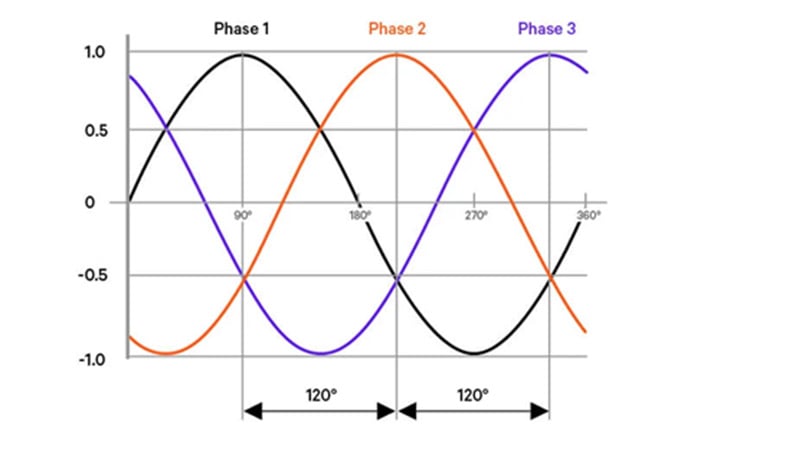
Figure 2. Systèmes d'alimentation AC triphasés
D’autre part, les branches conductrices de courant des systèmes d’alimentation AC monophasés sont toujours espacés de 180 degrés (voir Figure 3). Par conséquent, il y a des cycles pendant lesquels aucune alimentation n'est fournie à la charge, ce qui ne convient qu'aux applications domestiques et commerciales légères pour une alimentation en énergie décente.
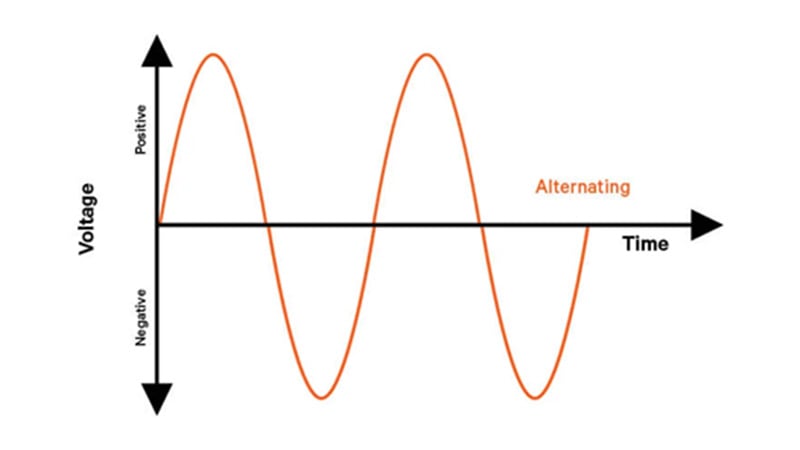
Figure 3. Alimentation AC monophasée
Les capacités du système triphasé à alimenter en électricité de manière constante et sans aucune interruption en font un choix idéal pour les applications informatiques de haute puissance. L'alimentation électrique constante et équilibrée peut répondre aux exigences souvent fluctuantes des charges de travail de l'IA sans compromettre les performances ni endommager les équipements critiques. Elle permet également une meilleure utilisation de l’énergie, réduisant ainsi le gaspillage et augmentant l’efficacité énergétique.
Les larges ASI triphasées de Vertiv utilisent des algorithmes de contrôle d'onduleur avancés qui échantillonnent et neutralisent activement les harmoniques actives présentes dans les charges, ce qui permet de relever les défis posés par les charges « pointues » de l’IA et leur contenu harmonique élevé. Ces solutions garantissent une alimentation électrique plus propre, améliorant les performances et la fiabilité des systèmes exécutant des charges de travail d’IA complexes.
Permettre une alimentation AC continue et de qualité supérieure
Les ASI on line double conversion offrent une alimentation AC continue et de qualité supérieure, essentielle pour des opérations IT fluides. La conversion entre AC et DC protège ces systèmes contre les problèmes de tension et évite d’endommager l’équipement. De plus, ils disposent d’un bypass interne fiable qui réduit le risque d’interruption pendant la maintenance ou les pannes.
Les ASI on line isolent les charges critiques des irrégularités de l’alimentation électrique, protégeant de tous les problèmes électriques et garantissant un fonctionnement des systèmes d’IA avec une énergie stable et propre. Leur capacité à maintenir une sortie sinusoïdale parfaite et à fournir un temps de transfert nul vers la batterie pendant les pannes est essentielle pour prévenir la perte de données et garantir des opérations ininterrompues.
L’intégration de la technologie de refroidissement liquide dans les systèmes ASI est cruciale pour garantir une alimentation électrique continue, ce qui est essentiel pour les charges mécaniques dans la distribution du liquide de refroidissement. Des systèmes de refroidissement fiables maintiennent des températures optimales pour les équipements et les sites. Grâce à des systèmes ASI améliorés, les opérateurs de data centers peuvent être certains que les mécanismes de refroidissement continuent à fonctionner sans interruption pendant les défaillances électriques, soulignant ainsi la nécessité d'une alimentation électrique constante dans les environnements informatiques à haute densité.
Une transition transparente vers des solutions de stockage d’énergie
Les systèmes d’ASI à réseau interactif fonctionnent avec des technologies de stockage d’énergie telles que les BESS pour contribuer à gérer les besoins en électricité des applications d’IA. Elles assurent toujours l’alimentation, même pendant les pannes ou lorsque la demande est élevée. Avec des fonctionnalités de réserve de fréquence (FFR) rapides, les ASI répondent rapidement aux fluctuations de l’offre et de la demande, permettant une transition en douceur vers l’énergie stockée sans interruption. Cela est essentiel pour les data centers dotés de charges de travail intensives d’IA et de HPC.
Les BESS fonctionnent avec l’ASI pour équilibrer la charge d’IA, stockant l’énergie supplémentaire lorsque la demande est faible et en la libérant pendant les périodes de pointe pour maintenir les opérations d’IA alimentées (également appelées « écrêtage des pics »). Cette combinaison prévient les surcharges, maintient l’efficacité opérationnelle et réduit la dépendance à l'égard des sources d’alimentation classiques.
Alimentez votre déploiement IA/HPC
Les ASI à haute puissance peuvent aider à gérer les exigences de charge d’IA des data centers, servant de base robuste à l’ensemble du réseau d’alimentation. Cependant, se préparer aux exigences des charges de travail croissantes d’IA et de HPC nécessite plus qu’une ASI fiable.
Vertiv propose une solution complète qui offre une assistance et une expertise approfondies aux data centers gérant les charges de travail d’IA et de HPC. Nous offrons un large éventail de catégories de produits et de technologies du secteur pour l’IA/HPC. Que vous ayez besoin de toutes nouvelles technologies ou de systèmes de rénovation pour des densités supérieures, nous sommes là pour vous accompagner.
Choisissez votre parcours vers la haute densité
Votre parcours vers la haute densité peut être une expérience fluide. Vertiv propose des solutions avancées conçues avec des leaders du secteur pour alimenter et refroidir les déploiements les plus difficiles. Commencez votre évolution vers l’IA avec Vertiv dès aujourd’hui.



